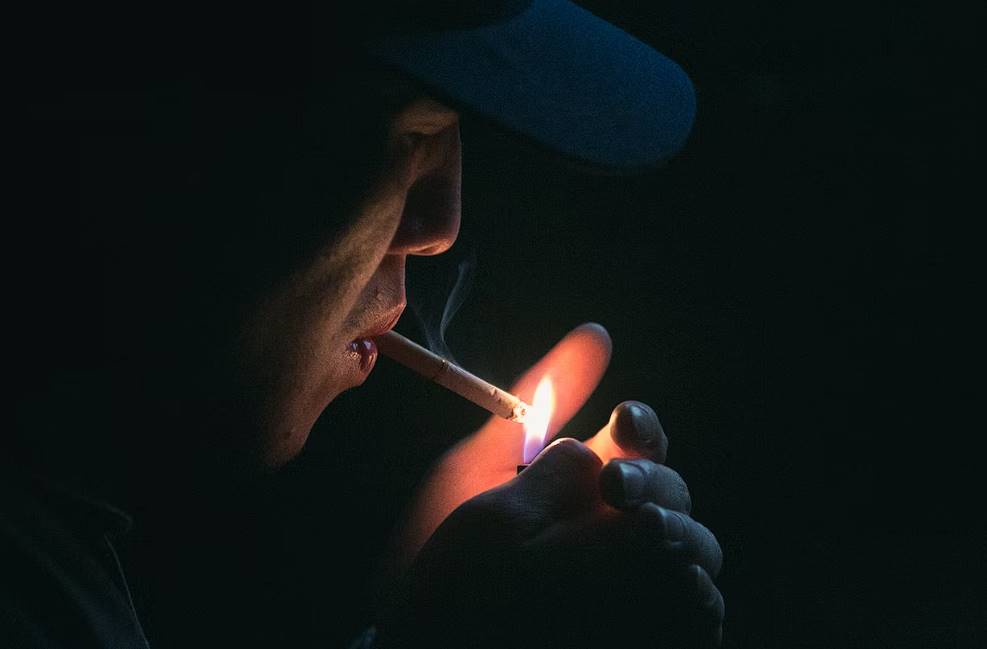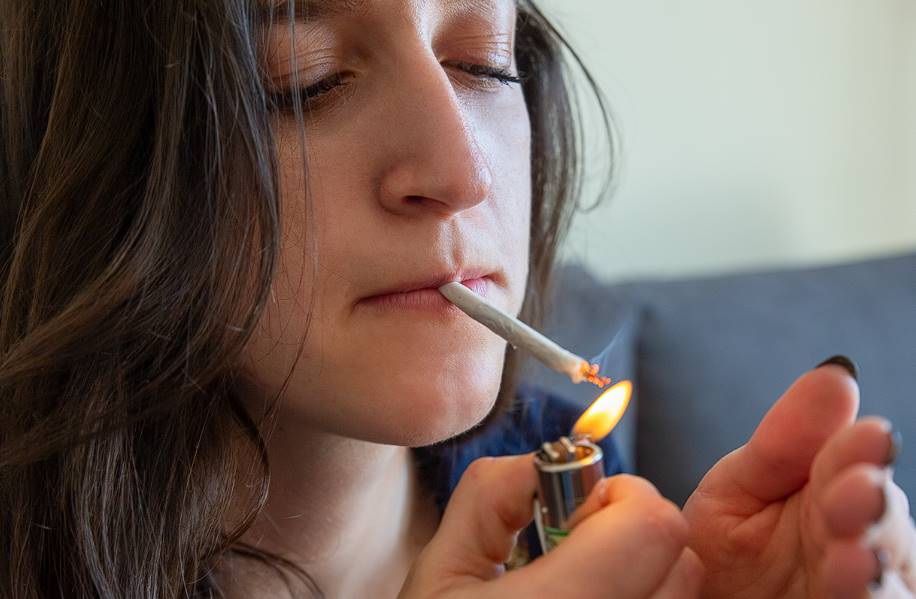The short answer to "Is there a connection between drug use and crime rates?" is "yes," however, the nature of that relationship is more complex than you may think.
Although a large portion of the millions of people currently incarcerated have done time for drug-related crimes, this does not mean that those who have used illegal substances in the past will continue to engage in criminal behaviour. There is no equivalence between the two; a correlation does not prove causation.
However, while having the highest incarceration rates of any drug category, marijuana users (the most prevalent illicit users nationwide) had some of the lowest rates of committing other crimes.
Those who use drugs regularly or develop addiction are not more prone to commit criminal acts. Criminal behaviour may be more likely among those who regularly use harder drugs or have been through traumatic experiences.
What Is The Connection Between Drug Use And Crime?
Drugs affect crime rates in various ways, but perhaps the most significant is the alterations in personality and social interactions that often accompany drug use.
Change In Motivation
Changes in motivation are one of the earliest and most noticeable effects of drug use. Drug addicts and alcoholics can be just as driven as everyone else. Contrary to popular belief, these people tend to be highly driven. But they have incorrect motives for doing so. A drug user's thoughts are almost certainly focused on the substance itself, how to obtain it, and its associated hazards.
Addiction develops when one becomes completely consumed by their intense need to use drugs. But a hint of drug use might trigger a reaction that leaves you wanting nothing more than to take more of the drug.
People may be drawn to it because it reduces tension or allows them to act unconventionally. They are prepared to do whatever it takes to avoid dealing with the actual world.
Those with few means often have to resort to criminal activity in the hopes of finding financial stability. Because of this, persons who are addicted to drugs may resort to illegal means to obtain more of the substance, and drugs may grow to be seen as essential to their survival. As a result of this change in outlook and motivation (or lack thereof), the individual's previously romantic relationships, solid career, and financial situations begin to deteriorate.

Influx Of Hormones
Along with the shift in motivation, the inability to perform normally without drugs is a major problem associated with substance abuse. An individual's levels of adrenaline, dopamine, and other chemicals are drastically altered by drug use.
Without rehabilitation services, abruptly discontinuing use can lead to symptoms of despair or anxiety that can spiral out of control. Detox is an intellectually, physically, and emotionally taxing procedure, but it may be the beginning of a good clean life if completed successfully.
Medical distress, hospitalisation, and relapse are all possible outcomes of poor detoxification and rehabilitation. Many people who relapse into addiction commit criminal behaviour to satisfy their basic requirements. This is why many people who take harsh drugs also commit violent crimes.
They are under stress and pressure to perform adequately, but their hormones are all over the place, leading to explosive outbursts of violence. Even first-time drug users are at risk of developing unstable moods, violent tendencies, and other strong emotions when using certain substances.
Changes In Society
The drug user also experiences a shift in their social circle. Drugs are frequently used as an escape from challenging social situations. However, this will not lead to any improvement and can have devastating consequences for the individual's capacity to participate in everyday life at home, work, and public. It's possible they feel they need medications to get through life normally.
Consciousness Removal
Even a single drug usage can lead to criminal behaviour by removing the brakes we are born with. We discussed how the after-effects of drug abuse can alter motivation, but the use can cause a shift in perspective. Even when we're not under the influence, everyone has illegal thoughts. It's normal to think, "What if I did this?" Everyone has had intrusive thoughts at some point in their lives.
However, people who regularly use drugs are more likely to be seduced by such ideas. They no longer care about their actions' outcomes since they have lost their conscious limiter. More frequent or deliberate engagement with such ideas may increase the likelihood of a drug user engaging in illegal behaviour.
Who's At High Risk?
Even while most marijuana and hard drug users will never be convicted of a drug-related crime, some persons are more susceptible to the negative outcomes associated with drug use. The following characteristics put a person at a higher risk:
- An unstable income for the family.
- Challenges at work.
- Relationship difficulties.
- Problems with one's mental health.
Those already in a disadvantaged position in life and turn to drug usage as an escape are statistically more prone to perform criminal acts and be found guilty of them. This occurs because addicts who can no longer afford their habit often resort to criminal activity to make ends meet.
However, drug usage is not synonymous with criminal behaviour. Many drug users do not commit crimes, and it is commonly held that drug usage does not create criminal behaviour but rather the environment in which the user finds themself.
Youth, Gangs And Drugs
According to a series of longitudinal studies that considered differences in age, sex, and ethnicity, proximal predictors of violence changed for young individuals as they transitioned from adolescence to adulthood.
Compounding unfavourable characteristics increases the risk of young individuals, especially young men, being associated with crime, violent crime, and/or drug usage as parental influence declines with age and peer influence rise.
Studies have pointed to the following as contributing variables towards juvenile involvement in violent crime and drug misuse, while it is difficult to define particular elements as influencing youth involvement in drug-related violent offending:
- High victimisation rates and poor socioeconomic status in areas with high crime rates.
- Family factors include early abandonment, hostile or inconsistent parenting, poor attachment to parents, and exposure to domestic abuse.
- Having a positive outlook on drug usage or violent behaviour; hanging out with criminally-minded friends.
- Belonging to a minority group, having academic challenges, or not attending school;
- High rates of reported criminal behaviour; early onset of drug misuse; antisocial personality; drug dealing; conduct disorder; felt or observed emotional issues; conduct disorder; and antisocial personality are all examples of conduct problems and psychopathology.
Violence And Drug Use
Substance misuse has been linked to aggressive tendencies, and this is a well-established fact. More than 26% of those who used cannabis, alcohol, and cocaine in the previous 12 months also admitted to committing a violent crime, according to one study.
Some people resort to violence to steal money for more drugs, while others may be complicit in the drug trafficking that leads to such acts of violence. Others' substance misuse leads to violent behaviour over time. Methamphetamine addicts, for example, may exhibit symptoms including aggression, hostility, and irritability.
Cocaine usage also carries the psychological danger of unpredictable, aggressive, or paranoid behaviour. Similarly, hallucinogens may result in irrational, violent, and perhaps lethal behaviour.
What someone does to defend themselves may depend on the nature of the crime that has been committed or is being perpetrated. It has been proven that drug traffickers have more extreme aggressive tendencies than drug users. Violent trafficking is caused by:
- Competing for drugs.
- Conflicts or fraud.
- Traffickers with aggressive personalities.
- The exploitation of areas with poor socioeconomic status.
When considering drug or trafficking offences as a whole, these factors should not be overlooked. Large- and small-scale drug traffickers face stiff competition from other dealers, and their consumers aren't always the most reliable sources.
Drug Abuse, Crime, and Its Impact on Society
Drug abuse and alcohol consumption have become significant factors contributing to criminal behavior in society. A considerable portion of incarcerated individuals suffer from addiction or alcohol dependence. Additionally, substance abuse has been linked to sexual assaults on college campuses.
Addressing these issues requires a comprehensive approach that encompasses treatment for substance use disorders (SUDs) and violent behaviors, as well as policy implications to reduce drug-related crime and violence.
The Link between Substance Abuse and Crime
Alcohol and Drug Dependence in Incarcerated Individuals
Studies reveal that a significant percentage of incarcerated men and women are affected by alcohol or drug dependence. Approximately 18% to 30% of male inmates and 10% to 24% of female inmates suffer from alcohol-related issues.
Furthermore, drug abuse or dependence affects 10% to 48% of male prisoners and 30% to 60% of female prisoners. Notably, a connection has been found between violent crime victims and their abuse of sedatives and alcohol.
Substance Abuse and Sexual Assault
Alcohol's Role in Sexual Assault on College Campuses
Around 50% of all sexual assaults on college campuses involve alcohol either in the perpetrator or the victim. While alcohol may not be the sole cause of such assaults, it does play a significant role in impairing judgment and reducing resistance to attack. Research indicates that men with a history of binge drinking or high alcohol consumption were more likely to be involved in sexual assault incidents.
Correlation Between Substance Use and Sexual Assault
Substance abuse, especially alcohol and other drugs, has been linked to an increase in sexual assaults. In a study, 41% of female participants reported being coerced into intercourse while under the influence of opioids, while the percentage was 11% among male participants.
SUD and Violent Behavior Treatment
To effectively treat individuals with SUD and violent behaviors, support services are crucial to address their aggressive impulses. In addition to addiction-focused programs like detoxification, inpatient rehab, and outpatient treatment, various other services are required:
- Substance addiction therapy
- Anger management programs
- Mental health counseling
- Parenting training
- Legal aid
- Support groups for aggression
Referrals to specialized facilities may also be necessary for individuals with co-occurring issues, such as SUD and a history of domestic violence.

Policy Implications for Combating Drugs, Crime, and Violence
While young people are not solely responsible for drug-related crimes and violence, they often play a significant role in such activities within their communities. Therefore, addressing these social issues necessitates focusing attention on young individuals at the family, neighborhood, and community levels. Key policy goals include:
- Prevention of drug misuse through law enforcement efforts, criminal penalties, counseling, education, and treatment services for young people.
- Prioritizing services for addicts, their families, and high-risk neighborhoods to reduce drug-related crime and violence.
The interplay between drug abuse, crime, and violence has become a complex challenge for society. Addressing this issue requires a multifaceted approach, including treatment for SUD and violent behavior, as well as policy initiatives aimed at prevention and support services for young individuals. By taking comprehensive action, communities can work towards reducing the prevalence of drug-related crimes and their detrimental impact on society.
Conclusion
Illegal drugs make people do bad things in many ways, such as by changing their motivation, making them unable to function properly without drugs, and changing the way society works. Motivation is an important part of drug use, as people may be driven by a strong desire to use drugs.
Not being able to function properly without drugs can make detox and rehab less effective, which can lead to mental distress, hospitalisation, and relapse.
Staff changes can also be a big reason why people start using drugs because they may feel like they need them to live a normal life. Even one drug use can make us do bad things because it takes away the natural brakes we have. People who use drugs often are more likely to be tempted by illegal ideas, which makes them more likely to do illegal things.
People who are at high risk are more likely to have bad things happen when they use drugs, like an uncertain income, problems at work, problems with relationships, and mental health problems. But using drugs isn't the same as being a criminal, and most people believe that it's not the drugs themselves that make people do bad things but the setting they're in.
Violence is also linked to youth, gangs, and drugs. More than 26% of people who used cannabis, booze, or cocaine in the past year admitted to committing a violent crime. Some people use violence to steal money so they can buy more drugs, and others may be involved in the drug trade which leads to these violent acts.
The link between drug use and crime rates is complicated, but it is clear that people who use harder drugs often or who have been through stressful events are more likely to commit crimes. Drug trafficking is a complicated problem because drug dealers tend to be more violent than drug users.
Poor areas are often taken advantage of because of things like competition for drugs, fights or scams, and people with aggressive personalities. Abusing drugs and drinking too much alcohol are major contributors to violent behaviour in society, and a large number of people who are in jail or prison are addicted to drugs or alcohol.
Also, college school sexual assaults have been linked to people who use drugs. To solve these problems, you need a comprehensive plan that includes treatment for substance use disorders (SUDs) and violent behaviour, as well as policy changes to lower crime and violence caused by drugs.
People with SUD and aggressive behaviours need a lot of help, like therapy for addiction, anger management programmes, mental health counselling, training for parents, legal help, and support groups for aggression.
Policy effects for fighting drugs, crime, and violence include focusing on young people at the family, neighbourhood, and community levels and on prevention through law enforcement efforts, criminal penalties, counselling, education, and treatment services. Communities can work to reduce the number of drug-related crimes and their negative effects on society by taking a wide range of steps.
Content Summary
- Drug use and crime rates are connected, but the relationship is complex.
- Incarceration rates are highest for drug-related crimes, particularly marijuana.
- Drug use does not necessarily lead to criminal behaviour.
- Motivation changes in drug users, focusing on obtaining and using drugs.
- Addiction can lead individuals to resort to criminal activity for financial stability.
- Drug use alters the levels of hormones and chemicals in the body.
- Abrupt discontinuation of drug use can lead to emotional distress and relapse.
- Drug users may experience a shift in their social circles.
- Drug use can lead to the removal of inhibitions and conscious limits.
- Certain factors put individuals at higher risk of negative outcomes from drug use.
- Youth, especially young men, are more susceptible to crime and drug usage as parental influence declines.
- High victimisation rates and poor socioeconomic status contribute to youth involvement in crime.
- Family factors like abandonment and exposure to domestic abuse play a role in juvenile crime.
- Positive attitudes towards drug use and hanging out with criminally-minded friends influence youth involvement in crime.
- Youth belonging to minority groups or experiencing academic challenges are at higher risk.
- Substance misuse has been linked to aggressive tendencies.
- Cannabis, alcohol, and cocaine users have admitted to committing violent crimes.
- Violence can be linked to stealing money for drugs or the aggressive behaviour of methamphetamine addicts.
- Cocaine and hallucinogens can lead to unpredictable and violent behaviour.
- Drug traffickers have more extreme aggressive tendencies than drug users.
- Drug abuse and alcohol consumption contribute to criminal behaviour.
- A significant percentage of incarcerated individuals suffer from alcohol or drug dependence.
- Substance abuse is linked to sexual assaults on college campuses.
- Alcohol plays a significant role in impairing judgment and reducing resistance to sexual assaults.
- Substance abuse, especially alcohol, is linked to an increase in sexual assaults.
- Support services are crucial to treating individuals with SUD and violent behaviours.
- Addiction-focused programs like detoxification and rehab are essential for treatment.
- Substance addiction therapy, mental health counselling, and anger management programs are necessary.
- Policy implications include prevention through education and treatment services for young people.
- Prioritising services for addicts and high-risk neighbourhoods can reduce drug-related crime and violence.
- Addressing drug abuse and crime requires a multifaceted approach.
- The interplay between drug abuse, crime, and violence is a complex challenge for society.
- Comprehensive action is needed to reduce drug-related crimes.
- Drug users do not always engage in criminal behaviour.
- Addiction can lead to financial struggles, pushing individuals toward criminal activity.
- Abrupt discontinuation of drug use can result in emotional distress and relapse.
- Drug use can lead to changes in social circles and daily life.
- Substance misuse alters hormone levels and can lead to unstable moods and violent tendencies.
- Youth, especially young men, are at higher risk of being involved in crime and drug use as parental influence wanes.
- Factors such as high victimisation rates, family issues, and association with criminally-minded friends contribute to youth involvement in crime.
- Substance abuse has been linked to aggressive behaviour and violent tendencies.
- Drug users, particularly those using cannabis, alcohol, and cocaine, have admitted to committing violent crimes.
- Methamphetamine and cocaine usage can lead to aggressive and hostile behaviour.
- Drug traffickers often display aggressive personalities due to competition and socioeconomic factors.
- Treating individuals with substance use disorders and violent behaviours requires various support services.
- Policy implications involve prevention efforts, counselling, and education for young people to reduce drug-related crime and violence.
- Young people play a significant role in drug-related crimes and violence within their communities.
- Addressing drug abuse and crime requires a comprehensive approach involving treatment and prevention strategies.
- Society faces complex challenges in dealing with the interplay between drug abuse, crime, and violence.
- Comprehensive action and community involvement are essential to reduce the prevalence of drug-related crimes and their impact on society.
Frequently Asked Questions
Cocaine, heroin, marijuana, and amphetamines are drugs classified as having potential abuse. Drugs are also related to crime through their effects on the user's behaviour and generate violence and other illegal activity related to drug trafficking.
Collaboration among law enforcement, health, and social service agencies can help reduce demand, which fuels drug trafficking, often involving violence and crime. Treating addicts and preventing the onset of drug use can complement law enforcement efforts to reduce supply.
Substance abuse prevention, also known as drug abuse prevention, is a process that attempts to prevent the onset of substance use or limit the development of problems associated with using psychoactive substances. Prevention efforts may focus on the individual or their surroundings.
Consequences of youth substance abuse. Young people who persistently abuse substances often experience various problems, including academic difficulties, health-related problems (including mental health), poor peer relationships, and involvement with the juvenile justice system.
There are countless effects of drug addiction on the family. Strained relationships, financial difficulties, and increased risk of abuse are only the start. Since each family has a different dynamic, not all families feel the same effects to the same extent.




















